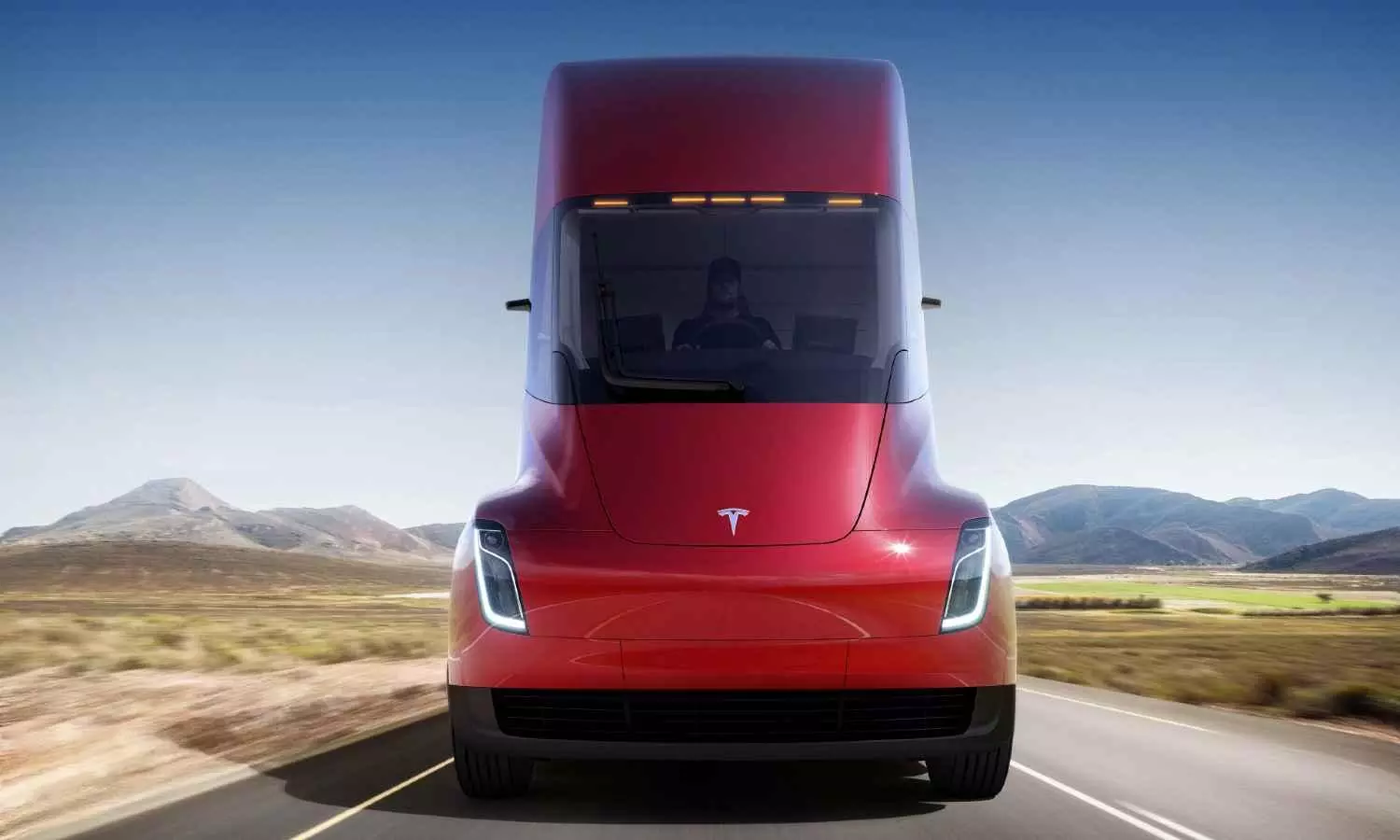Can electric trucks be India's future?
Trucks are the backbone of the Indian logistics industry, but they also contribute significantly to pollution. As businesses are reaching the pre-pandemic level, it is important to consider reducing carbon emissions.

India's transportation industry accounts for 13.5% of the country's energy-related CO2 emissions, with road transport accounting for 90% of the sector's total energy consumption, says Climate Action Tracker December 2020 report.
India is the world's third-largest emitter of greenhouse gases, and its domestic actions will have a considerable influence on global emissions, particularly in the transportation sector, where its modest vehicle fleet relative to its enormous population is predicted to develop fast. India has emerged as a renewable energy pioneer, and it has the potential to become a leader in decarbonizing transportation, which must go hand in hand with decarbonized power generation.
Although the industry is processing and expanding with advanced technologies, digitization, and modern tools, it is essential to consider how the sector can be sustainable and road transport decarbonized.
Need for Immediate Sustainable Action
To meet the Paris Agreement's goal of zero emissions by 2050 for the Indian transport sector, the energy system must be decarbonized and this entails quickly peaking emissions and cutting them in half by 2030.
Because emissions requirements differ across the country, heavy-duty trucks have been the slowest to reduce and improve their emissions. This is mostly due to the existing practice of maintaining stricter emission limits in a few locations while remaining lenient in the rest of the country.
"The major issue is that an electric vehicle's charge won't last until it arrives at its destination. We need to develop quicker battery-swapping technologies, a vast network of charging infrastructure, and higher battery capacity at cost-effective prices in order to reduce range anxiety"
Sushil Rathi, COO, Mahindra Logistics Transportation & Procurement & Chief Executive Officer - Lords Freight Limited
What does the industry need to do to become more sustainable and reduce emissions? We spoke to the industry experts to know their views.
"There are two ways, education and infrastructure and both of them to be implemented simultaneously. There has to be a corporate policy to reduce or control the carbon emission by x% per year and this can be printed in the audited FY result. The state government can pass bills for intra-city transfers of commercial vehicles (CV) that must be either CNG or electric and not diesel, of course in a phased manner. The infrastructure should be up to the mark with a deadline to offer CNG filling stations and the Electric Vehicle (EV) charging stations available in the city, state highway (SH), and national highway (NH) limits," suggested Debajyoti Bagchi, General Manager - Customs Bonded & General Transportation, TT Trucking.
Changing the whole logistics industry to more sustainable operations is not just better for the environment, but also the smarter and more profitable option. Here are three techniques suggested by Sushil Rathi, Chief Operating Officer - Mahindra Logistics Transportation & Procurement & Chief Executive Officer - Lords Freight Limited for encouraging sustainability in logistics and transportation that ensure firms can continue to deliver efficient, lower-cost customer service while also choosing eco-friendly choices.
Using technology to reduce one's carbon impact- Transportation efficiency can be enhanced by eliminating needless miles, enhancing freight load management, boosting data openness, and strengthening communication and coordination among players in the industry – and technology is at the heart of this sustainable strategy.
Leave the planning and optimization to data science- Today's logistics planning and execution systems employ artificial intelligence (AI) and machine learning (ML) to automatically and dynamically factor all of these elements to decrease the carbon footprint and avoid delays.
Transitioning to Electric Vehicles- Electric vehicles release considerably less carbon than combustion engine vehicles, making them a favoured clean technology for the future of mobility.
"In line with our commitment and plan to become carbon neutral by 2040, Mahindra Logistics has not only joined the "Science-Based Targets Initiative" (SBTi) but also managed to get validation from them for its targets towards carbon emission in the year 2021. We have laid out certain strategic steps to achieve our goal," said Rathi.
Growth in Recent Years
The Indian transportation industry is an important link between supply and demand. The demand, however, was felt during the lockdown. The sole mode of transportation that fed the B2B and B2C sectors, as well as the air export/import market that connected the airports, was road transportation.
With rapidly changing consumer behaviour, contemporary trade + e-commerce, and business digitalization gaining traction, this industry is primed to undergo a paradigm transition. The logistics industry has been behind in terms of not just changing market trends and economic production, but also technology adoption. However, the recent advent of technologies such as IoT, AI, and ML has set this business on a new path.
"The majority of the transport operators are focusing on reducing the carbon footprints and in a process of introducing CNG or EVs, subject to the infrastructure offered or improvised by the government of India"
Debajyoti Bagchi, GM, Customs Bonded & General Transportation, TT Trucking
"The e-commerce aggregators have managed to fulfil the demand of the end-users and it has flourished by leaps and bounds. The technology has transformed the entire SCM and eased the way the business used to happen earlier. The warehousing sector has evolved for storing and transporting goods closer to the national highways to avoid no entries and faster transit. The government is also focusing on building and rectifying the state highways and national highways which will ease the fatigue of the drivers and improve the ride experience with better mileage. The induction of mandatory fastag at the tolls reduces the wait time and encourages digital transactions," said Bagchi.
Logistics organizations need to stay on top of new and emerging trends to be on the cutting edge and remain competitive, from new technologies to exploring and taking advantage of altering regulations that necessitate new strategies and tactics to assure compliance.
"First, there has been an increase in e-commerce and omni-channel selling. This trend is also driving a shift toward 'direct to consumer' fulfillment and distribution, which necessitates smaller shipments with shorter cycle times. Second, we see leaner and more robust supply chains that balance capacity, prices, customer service, and waste. Third, there has been an increase in warehousing and fulfillment logistics, which will accelerate over the next several years with a significant transition from scattered storage across small, lesser grade facilities to big grade warehouses. Last but not least, technology is playing an important role in delivering visibility and transparency, as well as streamlining our clients' supply chains. Integration of autonomous technology will go beyond last-mile delivery and warehousing solutions to cover inbound logistics, long-haul transit, and cross-docking," said Rathi.
Can Electric Vehicles be the Future?
The trucking sector is expanding, with key developments including improved communication, more demand and supply, and greater use of technology. The road logistics market in India is projected to expand at a compound annual growth rate of 8% over the next three years, reaching $330 billion by 2025. However, given the pollution generated by trucks on Indian highways, and trucks being a big part of the Indian logistics business, it is time to think about how we can make truck transport more environmentally friendly.
"The growth can be ascertained in many folds in future and there could be diversified concepts coming in terms of the hub and spoke model. The future of transportation will not be limited to heavy-duty long trucks, it will be further subdivided into groups of small lengths & fewer wheels. The majority of the transport operators are focusing on reducing the carbon footprints and in a process of introducing CNG or EVs, subject to the infrastructure offered or improvised by the government of India," said Bagchi.
"Electric trucks are unquestionably the future of the trucking and logistics industries. Electric trucks have numerous advantages and potential applications. At the same time, there are some limitations. Leading automakers are working hard to address these shortcomings. These issues will be resolved soon, and electric trucks will be on the road," said Rathi.
Decarbonizing heavy-duty vehicles (HDVs), particularly long-distance trucks, is challenging. There are several obstacles to the widespread adoption of electric vehicles. Despite a rise in electric vehicle sales, there are still a number of issues in the real world.
"The revolution has begun already in the private vehicle segment. While the states also operate electric buses on the road and eventually the ratio is low. The reason for the low conversion rate is the public infrastructure in terms of charging stations. People and operators are conscious of the per km costing, but the infrastructure is still way behind expectation," Bagchi continued.
"A shortage of adequate charging stations is causing "range anxiety" in prospective electric vehicle buyers. The major issue is that an electric vehicle's charge won't last until it arrives at its destination. We need to develop quicker battery-swapping technologies, a vast network of charging infrastructure, and higher battery capacity at cost-effective prices in order to reduce range anxiety," said Rathi.
Through subsidies and other incentives, the Indian government is working hard to promote the use of electric vehicles by lowering the price of imported gasoline and improving air quality. Despite a rise in electric vehicle sales, there are still a number of issues in the real world. According to a Grant Thornton Bharat-FICCI survey, India would need 400,000 charging stations by 2026 to support the country's two million electric vehicles.
India has the capacity to move toward carbon neutrality and can also meet the target. Electric trucks, if implemented, have the potential to be the future of the Indian logistics industry, resulting in much lower carbon emissions. For this, industry and the government should start working together to achieve better and faster results.

Zinal Dedhia
Zinal Dedhia is the STAT Media Group's Principal Correspondent and a journalism graduate of Nottingham Trent University, UK. She has worked with Radioandmusic.com, ByteDance, and That's TV. Zinal is passionate about air cargo, aviation, and cargo drones. Her email address is zinal@statmediagroup.com.


